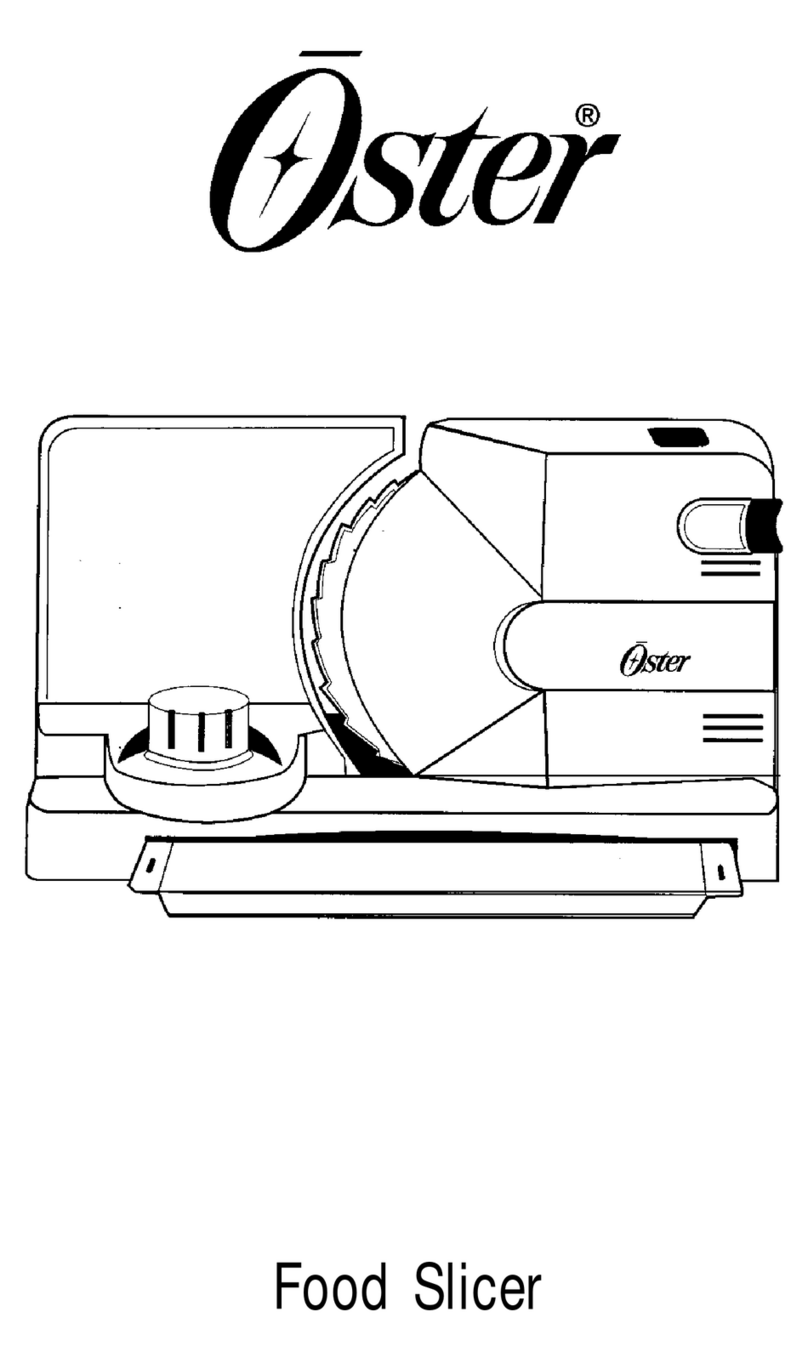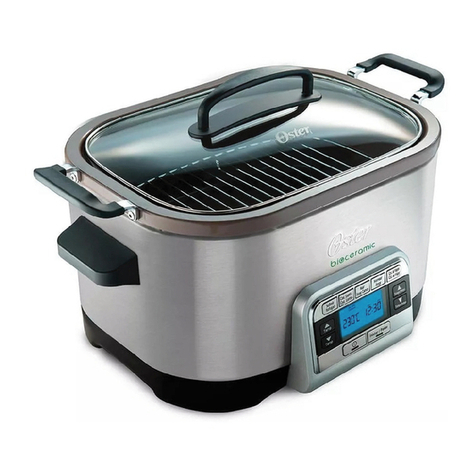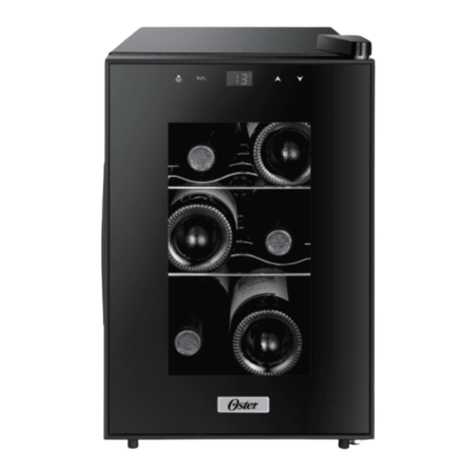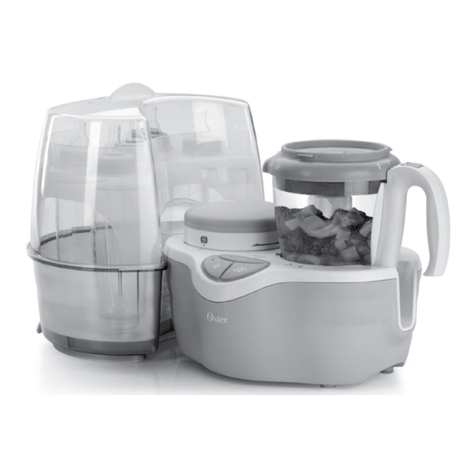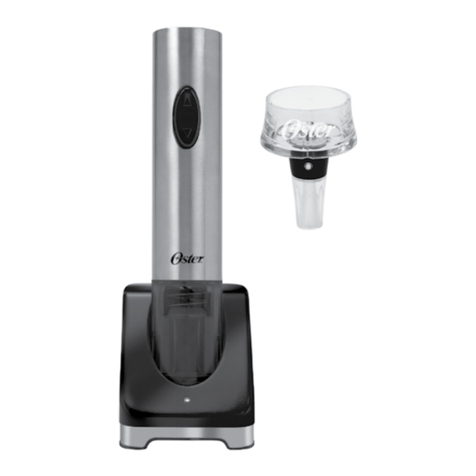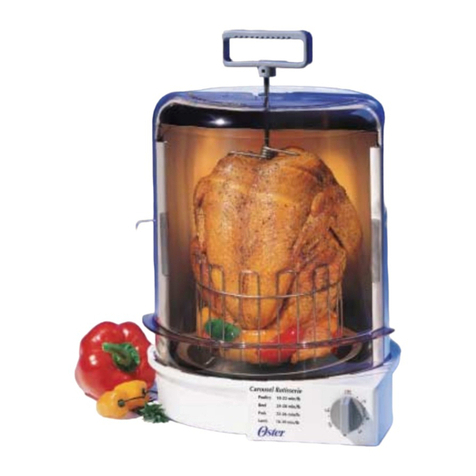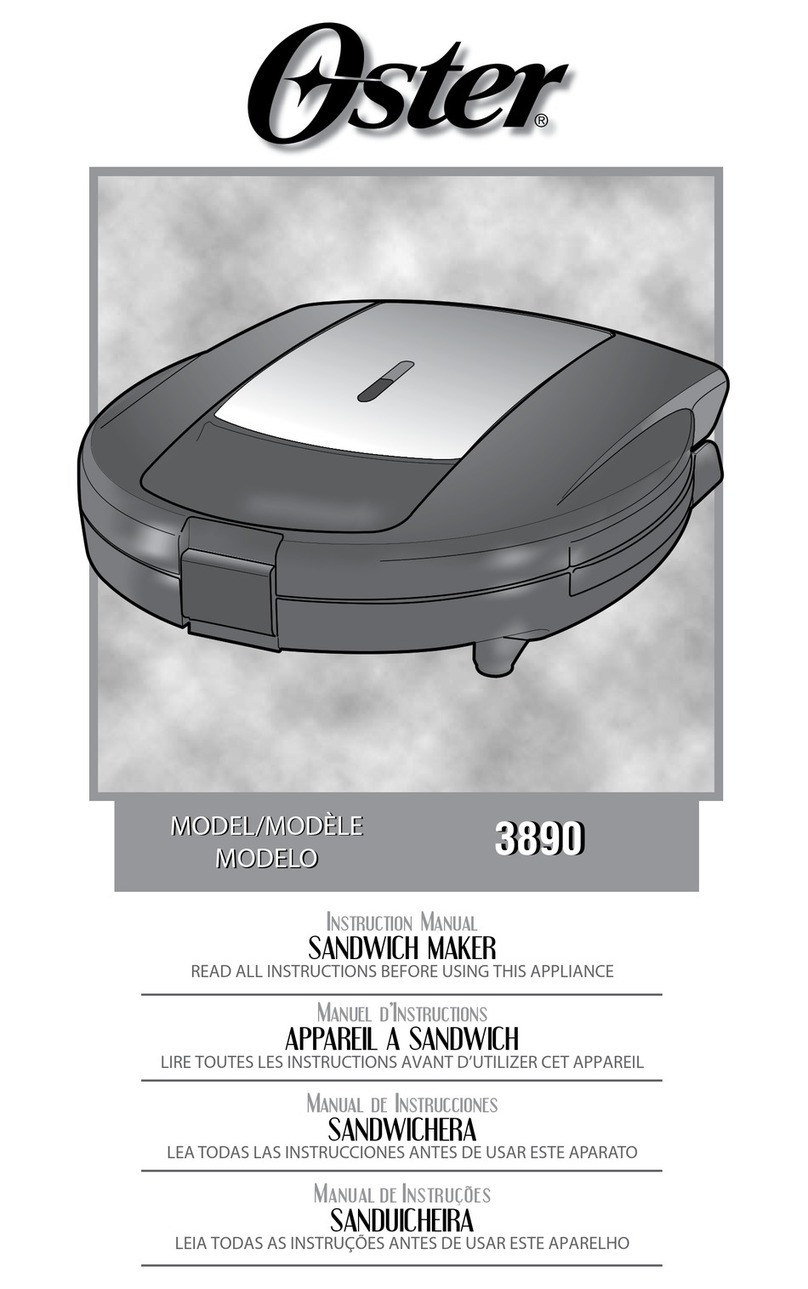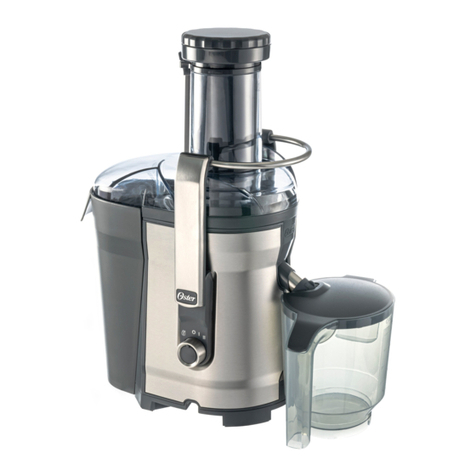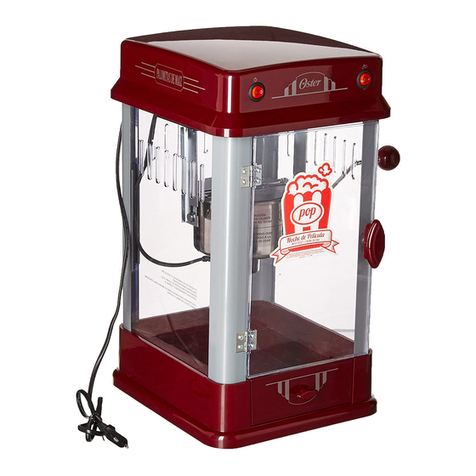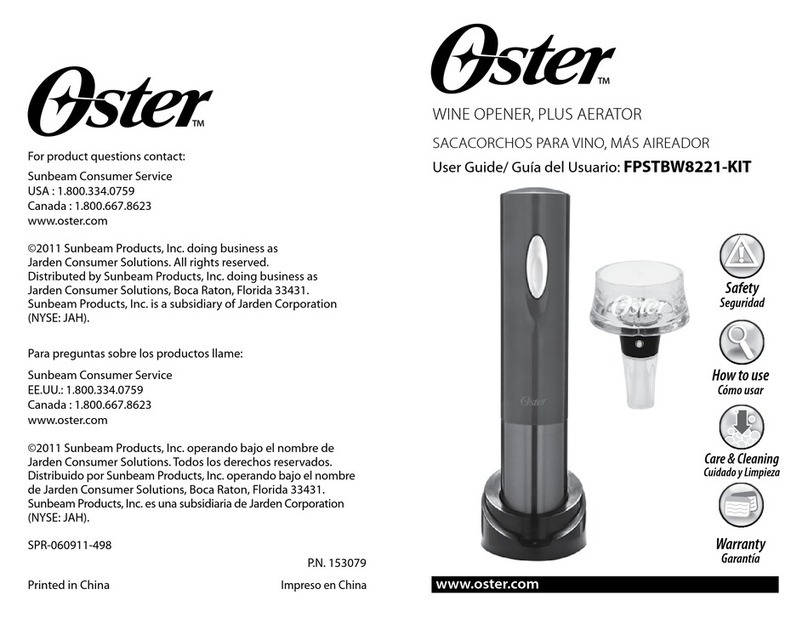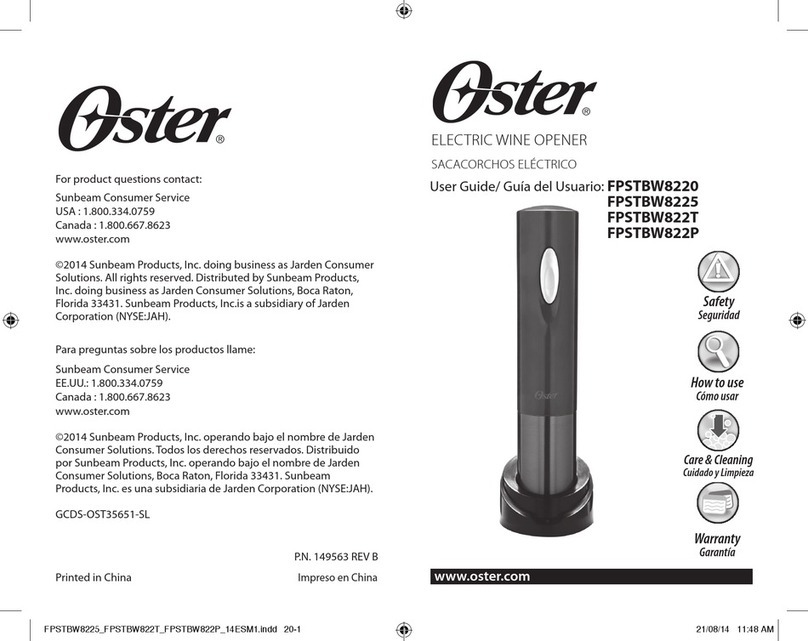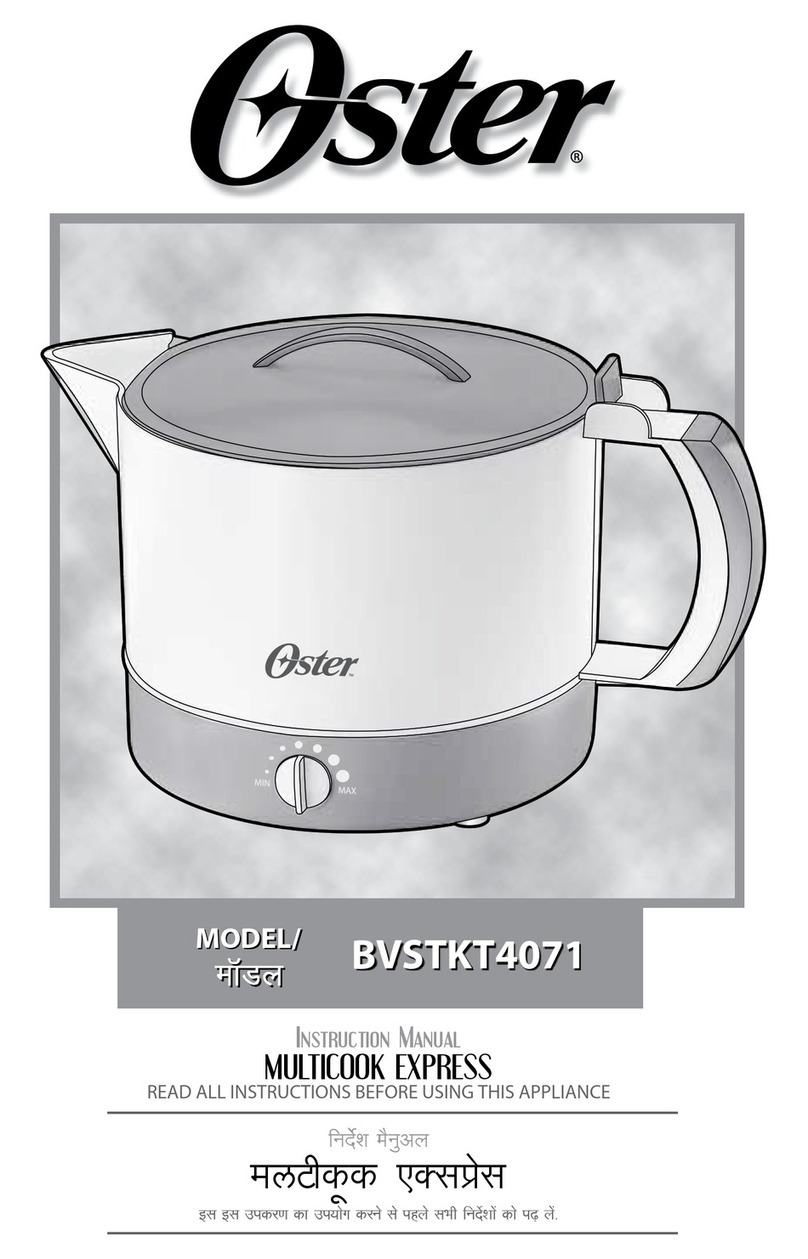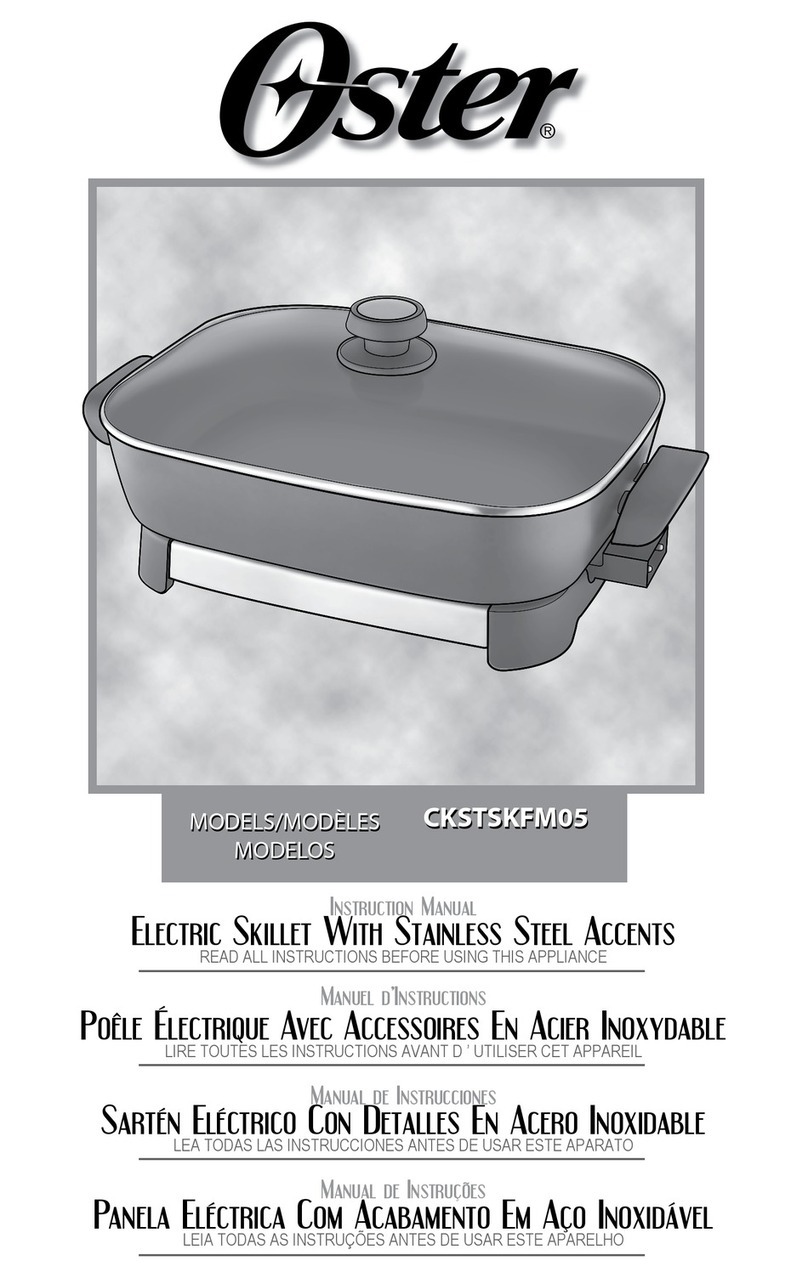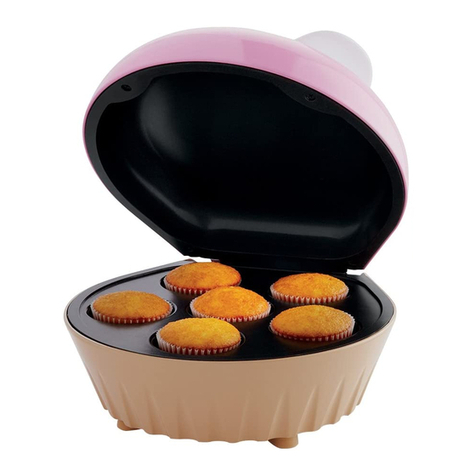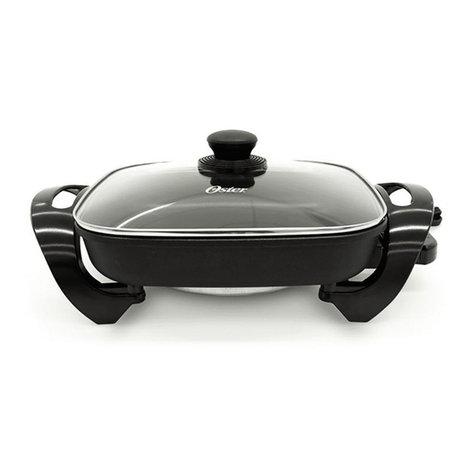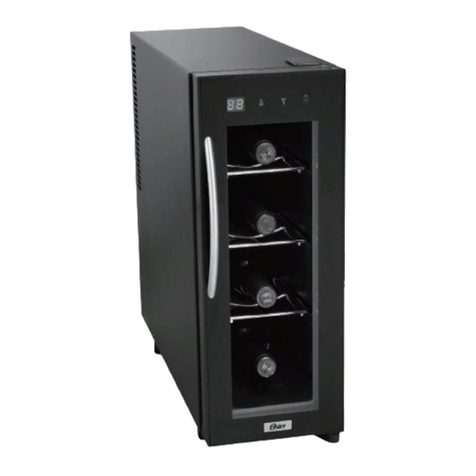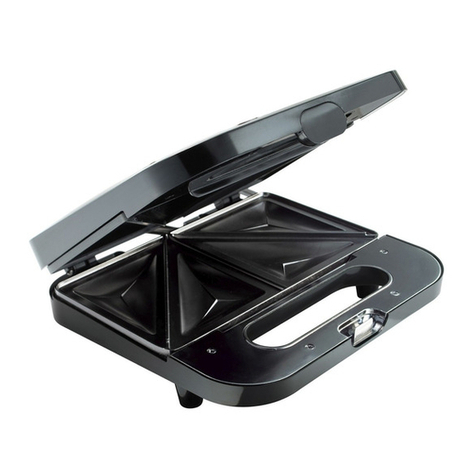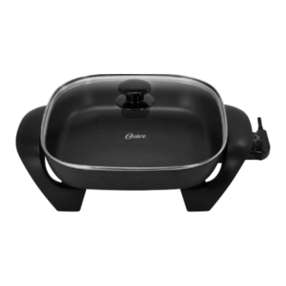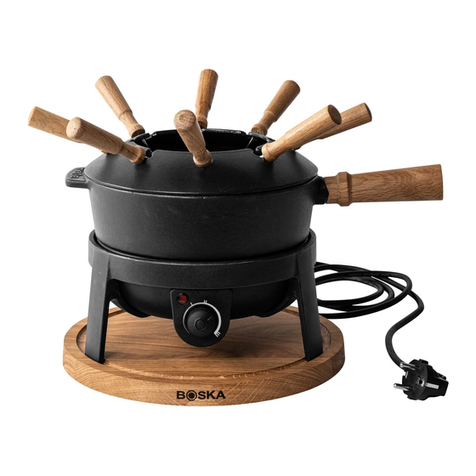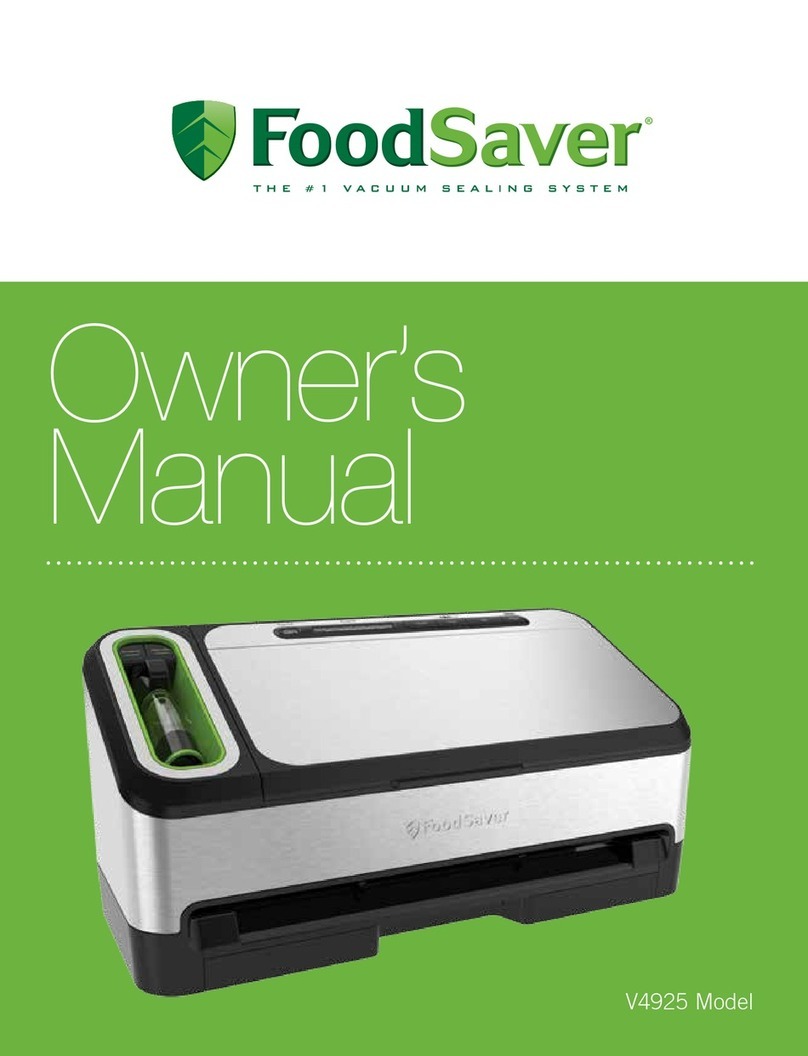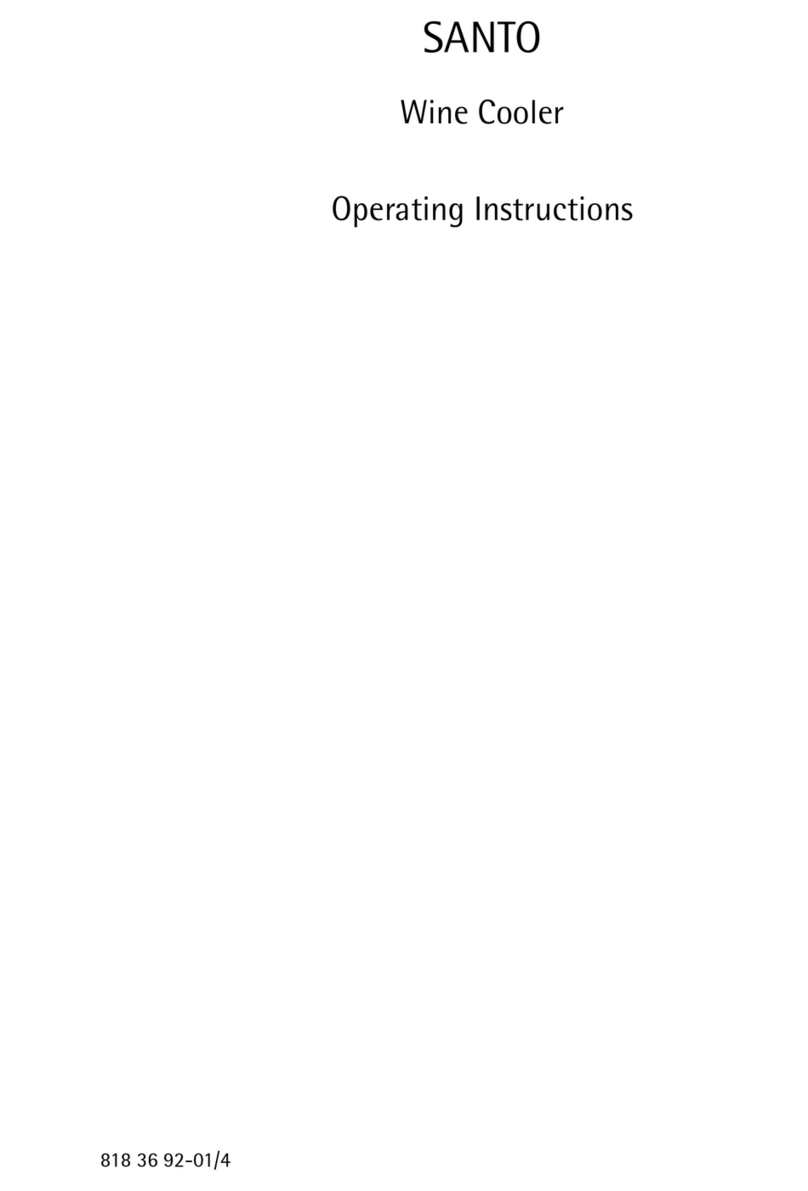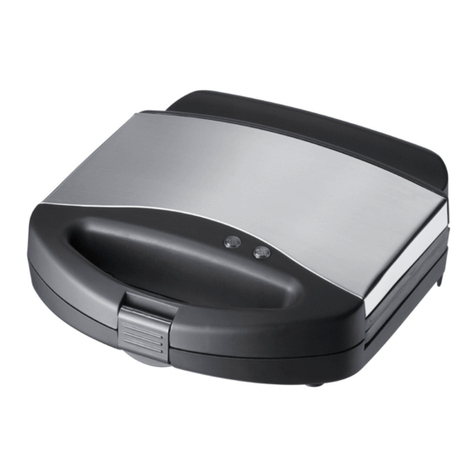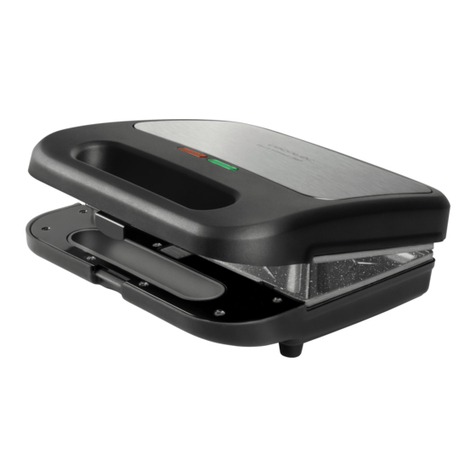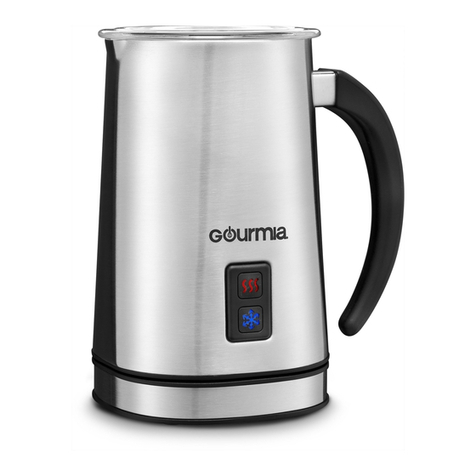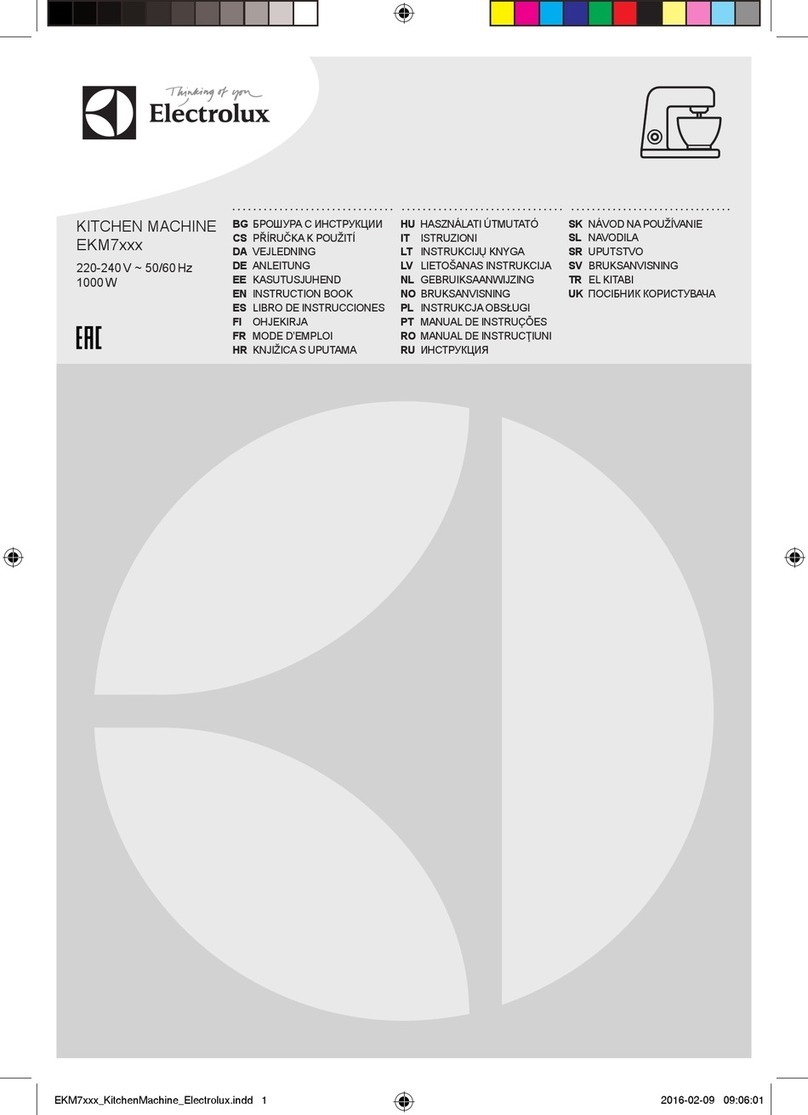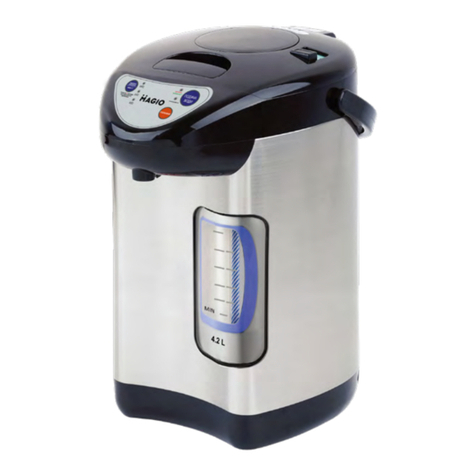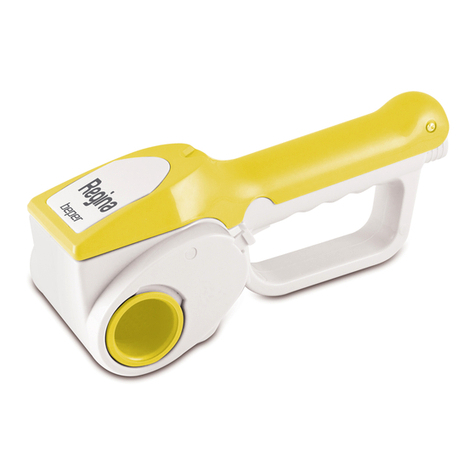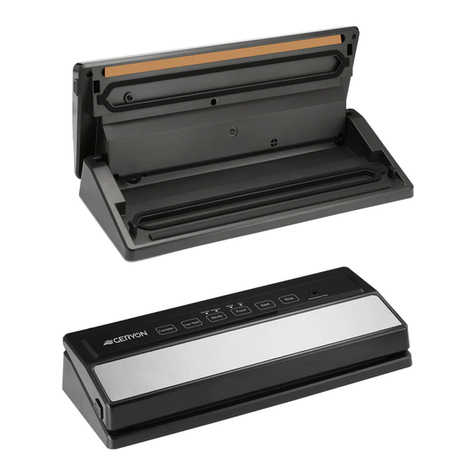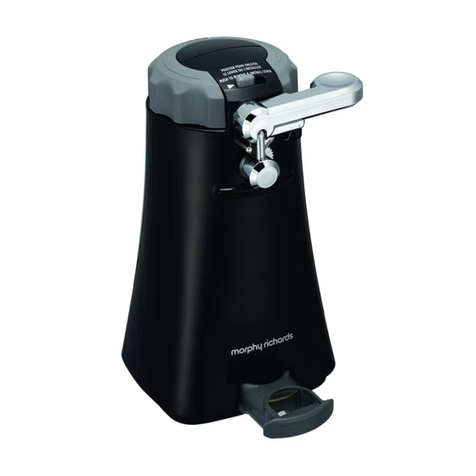8
8
step by step
1. Be sure unit is unplugged before starting.
Clean all parts and accessories with warm,
soapy water. Rinse well and dry thoroughly.
2. Rotisserie should be placed at least 8 inches from
walls and should not be positioned under cabinets.
3. Slide the drip tray into machine at the base
of unit. (Figure 1)
4. Position the heat reflector by sliding along
the inside top towards the back and placing it
behind the heating element. Reflector should fit
neatly into grooves at the back of heating element
leading into the drip tray.
5.
DO NOT EXCEED MAXIMUM SIZE.
MEAT OR POULTRY SHOULD NOT RUB
THE HEATING ELEMENT. MAXIMUM
LOAD OF 8 POUNDS.
Trim any excess fat
or loose hangings from meat or poultry before
positioning in Rotisserie.
6.
It is necessary to tie the wings and legs of poultry
together with plain string or butcher’s twine
to prevent loose pieces from rubbing the inside
of the door, heat shield or heating element as
the spit rotates inside the Rotisserie. (Figure 2)
7. Start with the end of a leg and loop a suitable
length of the string (about 12 inches) or twine
and tie-off. Bring the string to the next leg, pull
tightly and wrap once or twice around the end
and tie-off. Next, wrap approximately 36 inches
(3 feet) of string or twine around the body of the
bird making sure to secure the wings and legs
close to the body by wrapping crossways so there
is a big “X” of string or twine pulled tightly
across the breast. Bring free end of string to the
leg again and tie-off with a secure or double knot.
Cut off the excess string or twine so it does not
hang loose. The bird should now be a securely
bound bundle with no loose parts hanging from
its body.
1. Asegúrese de que la unidad esté desconectada
antes de iniciar. Lave todas las partes y accesorios
del asador con agua tibia y jabonosa.
Enjuáguelas y séquelas bien.
2. El asador se debe colocar por lo menos de
8 pulgadas de las paredes y no se debe colocar
bajo algún mueble de cocina.
3. Deslice la bandeja de goteo dentro de la máquina
en la base de la unidad. (Figura 1)
4. Coloque el reflector de calor deslizándolo a lo
largo de la parte superior interna y hacia la parte
trasera. Colóquelo detrás del elemento calefactor
que conduce en la bandeja.
5.
NO EXCEDA EL TAMAÑO MÁXIMO.
LA CARNE O AVE NO DEBE FROTAR
EL ELEMENTO CALEFACTOR.
CARGA MÁXIMA 8 LIBRAS.
Elimine
cualquier exceso de grasa o trozos de carne que
cuelguen de ésta o de las aves que vaya a cocinar,
antes de colocarlas dentro del Asador.
6. Utilizando hilo regular, cuerda de carnicero,
o hasta hilo dental, es necessario atar las alas
y las patas de las aves para evitar que las piezas
sueltas rocen el interior de la puerta, el escudo
calefactor o el elemento calefactor cuando la
varilla gire dentro del Asador. (Figura 2)
7. Inicie esta operación enrollando el extremo de una
pata del ave y átela. Lleve la cuerda a la otra pata,
jale fuertemente y enrolle una vez o dos veces
alrededor del extremo de la pata y átela. Entonces,
enrolle aprox. 36 pulgadas (3 pies) de hilo o cuerda
de carnicero alrededor del cuerpo del ave. En seguida,
enrolle la cuerda o el hilo alrededor del cuerpo del
ave, asegurándose de sujetar las alas y las patas
cerca del cuerpo del animal, y cruce el hilo de
manera que forme una “X” grande sobre la pechuga.
Lleve el extremo libre de la cuerda o hilo nueva-
mente hacia la pata y átela de manera que el hilo
no quede suelto. Ahora el ave ha quedado como
un pequeño bulto atado correctamente sin ninguna
parte suelta en la base de la unidad.
Step-By-Step Instructions
